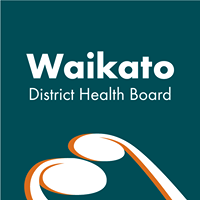Media Release
Date: November 8, 2012
Ready for an emergency
Trevor Ecclestone co-ordinates Waikato District Health Board’s emergency management planning – and there have been plenty of real-event tests to make sure the plans work.
Trevor is manager – emergency management planning. When an event occurs the DHB, hospitals and services have plans and people in place to deal with them.
“It’s our teams who co-ordinate the response,” Trevor says.
He’s seen the plans and people stand up when major events have hit the region. One of the biggest was the 2008 H1N1 swine flu pandemic, when the DHB Incident Management Team was in response mode for three months. “That was a really good test of our Health Emergency Plan (HEP) and the Incident Management team.”
There have been plenty of other events in recent years too, like Waikato DHB’s response to the Christchurch earthquake, the 2008 Tamahere coolstore fire, a measles outbreak, and hospital-specific problems like a power outage and the Conficker computer virus.
“Training and planning for teams to be ready means when there is a major event we hit the ground running,” Trevor says.
“If
something happens ¬– a pandemic, a natural disaster or
major accident – there are a lot of good people who know
what to do and how to respond.
“We are ready to go.
It’s not like having to start from scratch: there are
plans, systems and teams of people who know how to respond.
That’s what emergency management planning is all
about.”
Emergency planning is a long way from where Trevor started at the DHB – “scrubbing pots in the kitchen” as a school leaver. He moved on to be an orderly and then managing a staff of 130, until in 2005 he took over his current role.
He recently updated the DHB’s Health Emergency Plan which links essential primary, secondary, tertiary, mental health, disability support, public health services and the DHB Incident Management Team which will respond during emergency situations.
The DHB also links its planning into a Midlands region health emergency plan for Midlands DHBs, and the national health emergency plan overseen by the Ministry of Health.
Trevor says the HEP provides for an all-hazard approach to managing in emergencies. They can come in all shapes and sizes.
The plan is built around the four Rs of emergency planning – reduction, readiness, response, and recovery.
“The aim is to have plans and teams ready for any event or threat that would disrupt us, providing business as usual,” he says.
The reduction phase might involve, for example, encouraging flu vaccinations to limit the possibility of overwhelming health services in a pandemic situation.
Being ready means having plans and training systems in place to deal with a major event. Trained teams, job cards and tasks have been drafted and are ready to be used.
Response time is co-ordinating the health response and using the Co-ordinated Incident Management System (CIMS) which is used by all emergency services, including health.
Recovery is also tied to the CIMS model and can be a long-term part of the cycle.
The overarching goal of the Waikato DHB emergency planning service is ‘‘resilient health services in the Waikato DHB area”.
“A health emergency could be anything that is a serious threat to the health status of the community. It could be when a nearby DHB is overwhelmed and requires regional support.’’
While key regional hazards have been identified, the DHB has to be ready for whatever is thrown at it, including animal epidemic, earthquake, tsunami, rural fire, human pandemic, major transport accident, flooding or severe storm.
“We have also identified infrastructure/utility failures as significant risk to service,” Trevor says.
Emergency response could involve public health issues (water quality, epidemic), building failure, failure of electricity, gas, water, sewerage and telephone services, failure of critical supplies or transport networks, isolation of patients and staff. Usual providers like rest homes, pharmacists and GPs could be requiring or providing support.
“Getting response, information and communications to the public, service providers and our teams DHB-area wide can be difficult in emergency situations. We all have great technology nowadays but when these aren’t working we must return to the basics.
“Listen to the radio for the most up-to-date information and health-related messages.”
Trevor works closely with the emergency services and the Waikato Region Civil Defence Emergency Management Group which incorporates all agencies involved in disaster preparedness and response. “One of the biggest lessons from large events is that those responding agencies that know each other, network, meet regularly and train together can achieve better outcomes than those that don’t know each other well.”
So if you see Trevor in a coffee shop with someone from emergency services … he’s working.
ENDS



 Whanganui Regional Museum: Historic Wedding Dress Unveiled, A Piece Of Marton’s Heritage
Whanganui Regional Museum: Historic Wedding Dress Unveiled, A Piece Of Marton’s Heritage Donovan Ryan: Local Runner Takes Out Frontrunner Christchurch Marathon
Donovan Ryan: Local Runner Takes Out Frontrunner Christchurch Marathon University of Auckland: Tributes Flow For Much Loved Pacific Leader Melegalenu’u Ah Sam
University of Auckland: Tributes Flow For Much Loved Pacific Leader Melegalenu’u Ah Sam NZEI: Ministry Of Education Cuts Will Disproportionately Affect Pasifika
NZEI: Ministry Of Education Cuts Will Disproportionately Affect Pasifika Day One Hapai te Haeata: Call To Action For Young Filmmakers Against The Backdrop Of Funding Cuts
Day One Hapai te Haeata: Call To Action For Young Filmmakers Against The Backdrop Of Funding Cuts Toyota New Zealand: Three Races For Top Three To Decide TR86 Title
Toyota New Zealand: Three Races For Top Three To Decide TR86 Title